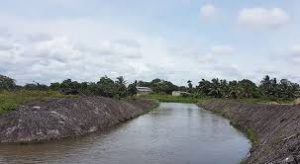Solid waste policies in Sri Lanka have been established with the objective of ensuring environmental accountability and social responsibility of all stakeholders. It demands active involvement of individuals and all institutions in integrated waste management practices to maximize resource recovery to minimize the amount of waste disposal and to minimize adverse Environmental and health impact.
One of the important laws and regulations with regard to solid waste is the National Environmental Act No 47 of 1980, which restricts the emission of waste materials into the environment and states the responsibilities and powers of the Central Environmental Authority. (CEA)
National Environmental (Amendment) Act, No. 56 of 1988 and National Environmental (Amendment) Act, No. 53 of 2000 have amended the sections in main act giving more concern towards the waste, the Gazette No. 1466/5 ordered regulation for the materials coming under polythene or polythene products.
Special regulation, No 1627/19 (2009) made by the Minister of Environment and Natural Resources under Paragraph (h) of Sub-section (2) of Section 32 (2) (h) of the National Environmental Act, No. 47 of 1980 especially talk about the Municipal Solid Waste.
Pradeshiya Sabha Act No.15 of 1987, Urban Council No.61 of 1939 and Municipal Council Ordinance No. 16 of 1947 are also important regulations in Solid Waste Management (SWM). These Acts and Ordinances state that the local authorities are responsible for proper removal of non-industrial solid waste and for providing suitable dumpsites.
Ministry of Environment prepared the National Strategy for Solid Waste Management in 2000, which recognized the need for SWM from generation to final disposal through a range of strategies, based on the 3-R principal. This was superseded by a National Policy for Solid Waste Management prepared in 2007 ―to ensure “integrated, economically feasible and environmentally sound SWM practices for the country at national, provincial and local authority level”.
Policy Objectives are:
- To ensure environmental accountability and social responsibility of all waste generators, waste, managers and service providers
- To actively involve individuals and all institutions in integrated and environmentally sound SWM practices
- To maximize resource recovery with a view to minimizing the amount of waste from disposal
- To minimize adverse environmental impacts due to waste disposal to ensure health and well-being of the people and on eco-system
A major activity that bounded from the National Policy is the setting up of the Pilisaru Programme in 2008 to solve the solid waste problem at the national level, the CEA, with the concept of reusing the resources available in the collected garbage to the maximum before final disposal. There are five main objectives in the Pilisaru Program,
- Development of a National Policy on Solid Waste Management
- Development of a National Strategy on SWM
- Effective education & awareness for all stakeholders on SWM including training & capacity building
- Facilitation for LAs for implementation of SWM projects / programs
- Legal reforms to strengthen effective law enforcement
National Post Consumer Plastic Waste Management Project is another project launched by the CEA for SWM at the national level.
The National government is taking steps at policy level to solve the SWM problem in Sri Lanka with collaboration of;
- Japan International Cooperation Agency (JCIA)
- Korea International Cooperation Agency (KOICA)
- United States Agency for International Development-United States-Asia Environmental Partnership (USAID-USAEP)
Despite these laws and policies, Sri Lanka has been facing issues concerning solid waste from time to time. We, as producers of waste, have the responsibility to not just wait and watch until the authorities do something about it, but try and come up with solutions to reduce our waste contributions and implement more sustainable practices.
Some Solid Waste Issues in Sri Lanka that have given rise to Public movements and Policy Changes
Karadiyana Garbage Dump Issue
An area of 25 acres in the wetlands of Boralesgamuwa – Borupana was being used as an open pit for the karadiyana garbage dump. The land used as a garbage dump is adjacent to the Weras Ganga, which flows into Bolgoda Lake. Located within the jurisdiction of the Boralesgamuwa Municipal area, Karadiyana has been used as a dumpsite for MSW collected from seven local authorities in the Colombo district. The residents are strongly opposing this Garbage Dump in protest. Government has adopted a ‘waste-to-energy’ approach for disposal/treatment of 650 and 500 metric tons of Municipal Solid Waste per day at selected locations in Muthurajawela and Kardiyana which was proposed as Public Private Partnership (PPP) projects with the Waste Management Authority of the Western Province. With the use of German and Danish technology it is planned to construct a waste to energy plant in the 10 acres of land allotted to them in Karadiyana.

Meethotamulla Garbage Dump Collapse Issue
Meethotamulla Garbage Dump was a mountain of garbage over 16 acres that collapsed on 14th April 2017 killing 19 people. Massive protests followed this event asking the government to find a different solution to solid waste problem. But the government had chosen to dump the collected garbage to Muthurajawela and Kotikawatta. However the policy makers have turned their attention to waste to energy solutions and other probable answers to this problem.

Garbage Dumping in Environmentally Sensitive Areas
Following the Meethotamulla incident, the Colombo Municipal Council started disposing waste at sites in Muthurajawela Sanctuary and Kotikawatta Dumping Grounds. The issue was challenged in Court by people and a non-government organizations and as a result discussions to formulate a national policy on waste management by the Ministry of Mahaweli Development and Environment were started in January 2018.
References
https://www.researchgate.net/publication/284722213_Municipal_Solid_Waste
http://www.sundayobserver.lk/2017/03/19/business/garbage-be-converted-energy
https://www.bbc.com/news/world-asia-39607218
http://efl.lk/v3/portfolio-categories/legal/
Images Courtesy of:
https://www.fairwaywastemanagement.com/wp-content/uploads/2018/08/fairwaywastemanagement_20180807_125527-1000×550.jpg
https://english.lankaviews.com/wp-content/uploads/2018/03/meethotamulla-garbage-disaster.jpg
Featured Image Courtesy of :
https://i.prcdn.co/img?regionKey=m9mlkrxuuLw9u2mZuBTJJQ%3d%3d

